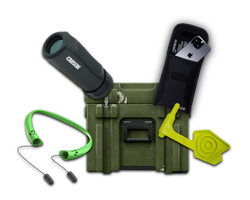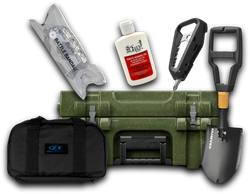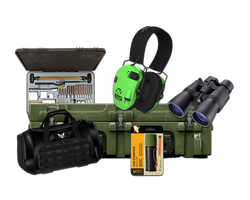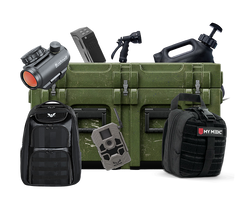
Eight Essentials for a Tactical Loadout
Every survivalist household should be equipped with a tactical loadout. While many preppers focus simply on outlasting disasters, SHTF tactical loadout plans are designed to help you fight your way to survival in any environment, familiar or foreign. To be truly prepared to overcome any emergency scenario, you need to arm yourself with the right loadout to ensure your family’s safety.
Magazines, communication, and medical equipment should be prioritized based on your personal needs. Here is our guide to the eight essentials, which can be customized based on your priorities and experience:
Loadout Carrier. You will need a carrier to hold your guns, ammos, assault rifles, etc. There are many carriers to choose from. You want one that will be protective, durable, and strong. You will also likely be on the move, so a carrier that is small enough to carry easily or one with wheels is a good choice. A sturdy inside strap that secures the contents while moving is also essential.
Personal Loadout Rig. Rolling loadout bags are a great option when you need a lot of heavy gear, but you want to remain as agile as possible. A personal loadout rig can help you carry your battle essentials without restricting mobility. When out and about, you will have easy access to weapons to use to defend yourself and your loved ones. Make sure it has pockets for all the essential gear – mag dumps, handheld gun, assault rifle, radio, flashlight, headlamp, water bottle, batteries, etc. Also ensure it is not exceedingly heavy as you will want to remain quick when faced with a combat situation.
Tactical Knife. A fixed blade in your belt is a must. You will never need to be concerned about running out of ammo when you have the right knife on you. The right fixed blade is not only useful in self-defense, but also in first-aid, hunting, fire starting, and shelter building.
Combat Weapons. You will need a 5.56mm or higher semi-automatic rifle, side arm pistol, or revolver as well as at least six rounds of magazines on your person at all times in a survival situation. We recommend keeping magazines upfront on your center line for easy extraction. Store 180 rounds of ammo for your primary weapon and 52 for your secondary one in order to be prepared to survive for an extended period.
Sight Accessory. A sight accessory makes it easy to spot adversaries. Another, option is to buy monoculars with night vision instead.
Proper Attire. You will need a Kevlar helmet rated at least NIJ Level III-A to protect you when in combat. It is also vital to have camo clothing and boots that match your environment. Protective glasses, gloves, and earplugs are also essential.
Medical Kit. An IFAK is a must for combat readiness. Always keep your medical kit and tourniquet in a location accessible by either hand so you can address it immediately on your own as your team finishes the fight.
Communication Equipment. Communication with your team is vital. If you cannot communicate, you will not be an effective team and may accidentally increase risk to one another. Having a reliable radio, such as a PTT and headset is important. Depending on your situation, you may want to invest in comm equipment that makes use of encryption technology.
Remember that it is important to not only invest in quality gear, but to train with it too. If you don’t have ample experience with your loadout before SHTF, you will be clumsy when accessing it in a stressful combat environment.
Share this article







